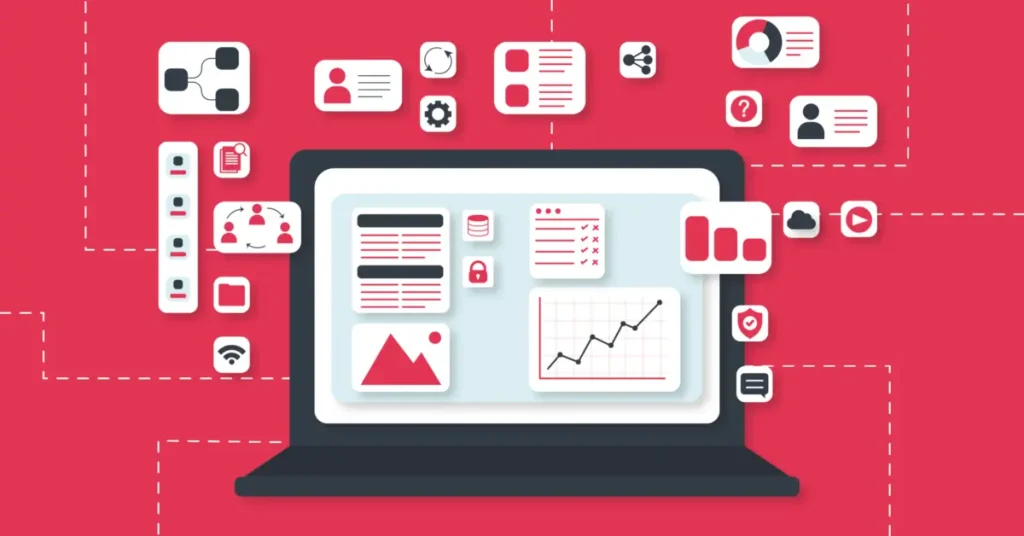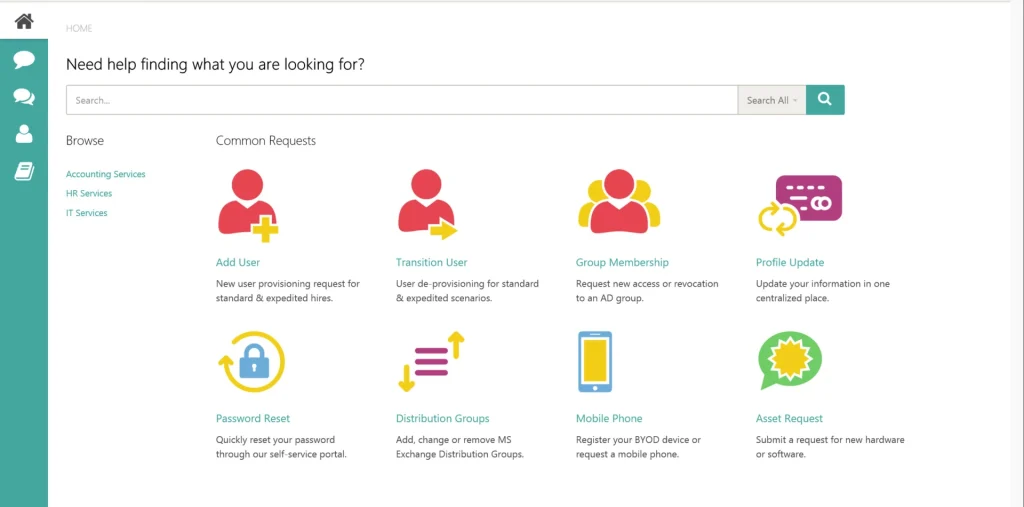The needs for customer services automation & digital transformation
According to a recent Gatepoint Research Customer Service Trends survey, most respondents considered excessive manual processes as the number one cause slowing down their customer service. The team spends too much effort on manual tasks such as classifying data and typing down information, which takes away the time for where it matters the most – taking care of the customers.
Plus, traditional customer service processes use a jumble of legacy systems, web portals, and desktop applications. Executives have to switch between screens and access multiple systems or websites, causing substantial inefficiency in customer responsiveness.
Today’s customers have higher expectations for the customer service function. They demand 24/7 and immediate access to their wonder. They also hate repeating themselves and expect their issues to be resolved in a single call. For enterprises that are currently having problems with CSRs, it is time for a digital transformation.
Usually, most companies rely on their available IT team, a software vendor, or outsourcing to build their desired apps. Yet, the process of creating an application that meets the demand of both entrepreneurs and customers can be lengthy and costly.
Given the circumstance and the struggle, many businesses are looking for an alternative. They want a solution that helps create applications faster and allows them to adapt to the constant changes in customers’ needs. Low-code stands out, promises to be the future of development with the rapid development ability.
What is low-code?
Low-code is a new developing technology that reduces complicated coding when building applications. You can quickly assemble application development with drag-and-drop elements and pre-build code blocks that run on multiple devices and platforms.
What makes low-code stand out is that it’s accessible to everyone. Citizen developers or someone with little coding knowledge can create applications with just a few clicks.

Low-code technology is no stranger in many industries. As said, many enterprises have increasingly applied low-code in customer service to improve client satisfaction and their experience.
Learn more about What is Low Code: Pros & Cons, Must-have features, Types & When to use
The benefits of low-code in customer services
There are multiple advantages for enterprises to utilize low-code customer service.
Boost Business Movement And Technology Shift
Businesses are mindful of digital transformation and adapting to recent technological changes. With low-code development on the rise, they now can continually refresh themselves and adapt to the ever-changing climate.
Low-code encourages citizen developers and business users to partake in digital transformation. As the learning curve is shallow, people from all technical background can adopt low-code.
This open new ideas for business when customizing their tool. IT department may stand too far behind the actual problems, thus, bad at creating a suitable solution. Low-code provides tool for customer services executives (and other departments) to express their ideas.
Reduce operation costs and save money
Unlike traditional coding, low-code application development for customer service is more straightforward. It makes coding more accessible and reduces stress on the IT department. All the previously complex and time-consuming coding is now easily managed. Your firm can minimize dependence on IT developers and the budget spent on hiring and retaining IT resources.
Increase the speed of application development
Besides saving the company’s budget, using low-code for customer service can also boost delivery speed. Not only can your team facilitate its drag-and-drop to automate the coding process, but it also provides API processors and pre-built components that omit the construction of new ones.
As apps are built faster and delivered to consumers quicker, this brings a faster response to their demands and increases engagement.
Alleviate the use of shadow IT
Shadow IT refers to the use of software, applications, websites, and systems without the permission and approval of the IT department. While shadow IT provides a framework for increasing innovation and productivity, its apps are hazardous and insecure.
With low-code, shadow IT is easily navigated. First, it offers a reliable platform for application development and management. Your IT executives can easily control and oversee every tools used with the company. Second, you can set up governance on how to harness the platform, meaning that every employee should adhere to it, reducing the chance of using apps without IT acknowledgement.
Faster automation
Thanks to low-code, your business can automate daily tasks and build workflows with its BPM features. Organizations have been and are going digital, making the process easier with the available digital tools.
Discover more about the advantages that low-code can offer to your business!
How to leverage low-code for customer services
1. Enhance contact center efficiency
A lot of information comes in and out in a short period at a contact center. It usually contains 2 types of data: the one it generates (number of calls, wait time, abandon call) and the unstructured one (customer sentiment, call topic, past interaction)
Callers always expect a quick and straightforward response. So, how can a call agent react quickly enough to satisfy the caller, while the topic and question given are not always the same?
Using low-code for customer services, you can build automation tools to help agents cut down time on manual tasks. Here are a few examples of what low-code can develop for a contact center:
- Implement AI and speech analytics to suggest an answer for agents to respond faster
- Automatic call routing
- Customize your CRM and Customer Database
- Voice response menu tree
- Use Low-code to build data analytics tools for your contact center
- Interactive voice system
2. Create customer self-services portals
A self-service customer portal can address client demands faster and give instant support while relieving the burden on the contact center. There are many ways to do it:
- You build a web page with FAQ content that people can access and search for their questions. These low-code website builders can absolutely help.
- You create a chatbot that can chat with the customer. Here the top 10 Low-code Chatbot!
Of course, a customer portal isn’t just for answering questions. eCommerce businesses can develop package tracking, finance companies can implement balance checking within the portal, businesses can build event registration portal. The sky is unlimited.

Everything a customer enters online is also automatically submitted to the database. This will ensure that agents always have access to the most up-to-date information.
Low-code can help you build the exact portal that your customers need quickly in days with reusable modules and out-of-the-box workflows. By digitizing customer support, your staff doesn’t waste time rekeying client data and switching between systems.
3. Process automation
Not just contact center automation, low-code can be used for any customer services process, such as:
- Internal process automation: data management, process between customer services departments and others
- Email marketing automation: send onboarding email sequences, “how-to-use” guidance email, verify email.
- Basic troubleshooting with customer services system
- Customer data management, including the act of gathering, identifying, and managing data
- Virtual assistants help customers in certain activities, such as signing up, onboarding, resetting passwords, and payment.
- Software applications that support customer services: CRM, social listening tools, help desk tools
- Explore further: Understanding Low-code Automation and Its Distinctive Features
4. Custom management system
The best thing about using low-code in customer services is that you can customize it accordingly to your needs.
Unlike other customer services software, you usually rely on what the vendor provides, which can have some limitations. And in some cases, you have to use multiple tools, which leads to a long period of integration or switching between them. Using low-code, you can freely make applications that best fit your company, all in a centralized platform.
Real-life use case of low-code customer services
Low-code customer services have transformed the operation and management of many businesses.
Spedal, a courier bike service based in London, is a successful case of low-code for customer services. Before the help of low-code, Spedal recorded their client data on Google Sheets, and customers received information through text on their devices. Both processes were often messy and chaotic. With low-code joining in, Spedal created a client self-service portal that streamlines customer and business communication.
Segment offers a program for new startups built on software deals, resources, and credits to help them expand faster. Before the low-code application, Segment held 15,000 firms’ data on a dashboard developed within the Airtable database. However, they expect to provide users with a log-in feature and convert data from text-based to visual.
With low-code, members of the startup program can now log in to the Segment’s Resource Hub via a self-service interface. They can now also access visualized deal books and redeem deals that are relevant to them.
Top low-code platforms in customer services
With so many low-code platform choices in the market, we have gathered some of the best low-code for customer services, including:
- Creatio: The best tools for process management and automation in any industry and business process. You can use Creatio to build an internal system or automation tools for the contact center with its drag-and-drop features, reusable templates, and customization blocks.
- Mendix: This low-code platform supports customer experience development and process automation. One of the best things about Mendix is that it promotes teamwork and collaboration with a wide range of development tools.
- Kissflow: You can build on-cloud automated business applications using Kissflow. It’s easy to use, scalable, and can be integrated with many CRM, ERP platforms
- UI Bakery: A cost-effective low-code platform for startups and SMBs. It provides many tools and design elements to build your applications quickly. Yet, since it’s best for small businesses, it won’t support certain advanced features.
- Airtable: Turn your spreadsheet into modern applications with Airtable. It also offers many pre-built templates for Sales CRM and OKR tracking.
- Microsoft PowerApps: If you are an enterprise and your customer services are more complex than usual, you can try Microsoft PowerApps, which are made for professional-grade applications and automation.
- Pega: Another enterprise-level low-code platform is Pega, which currently supports CRM, robotic process automation, and case management development.
- Sitecore: Enhance your Customer Data Management, DX, and CX with low-code platforms for customer services Sitecore. Even though Sitecore is suitable for any business, we recommend it for enterprise and complex projects since it’s not a cost-effective choice for small and middle-size companies.
Also, if you are looking for more choices, here is the list of top 21 low-code platforms to use!
Synodus is one of the leading gold partners of Microsoft PowerApps for Low-code in APAC.
Looking for consultation and customization support in low-code development for your customer services? We have teams of Low-code experts to help you carry out robust applications and optimized customer services automation!
Wrapping up
Businesses increasingly adapting low-code for customer service is a sign of digital progression, as well as a desire to meet and boost customer experience. Once applied, low-code can generate such benefits for the business, ranging from business elevation to advancement in technology. The application of low-code in customer services can be a customer portal, contact center, chatbots, and even a whole customer management system.
More related posts from Low-code blog you shouldn’t skip:
- Top 10 Custom Low-code Development Companies To Work With
- How Much Does Low-code Development Cost?
- How Low-code Make A Breakthrough In Financial Services?
How useful was this post?
Click on a star to rate it!
Average rating / 5. Vote count:
No votes so far! Be the first to rate this post.




